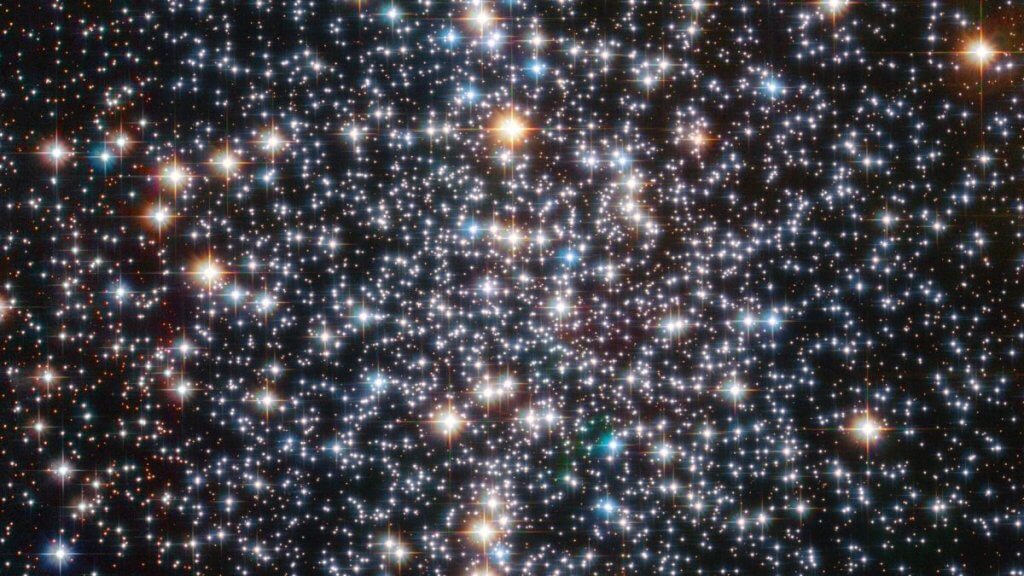
Hubble Space Telescope reveals a rare black hole lurking in our cosmic backyard (video) (Image Credit: Space.com)
A rare midsize black hole may be lurking at the center of a star party just 6,000 light-years away.
Astronomers have found a very tiny region jam-packed with the mass of 800 suns that is creating chaos among nearby stars, all of which points toward an intermediate-mass black hole just 6,000 light-years away in the constellation Scorpius. If the discovery pans out, it could add to the growing evidence that the universe is friendly toward such cosmic middleweights, only a handful of which have been found so far.
“It’s too tiny for us to be able to explain other than it being a single black hole,” Eduardo Vitral, an astrophysicist at the Space Telescope Science Institute in Maryland and lead author of an upcoming study about the finding, said in a statement on Tuesday (May 23). “Alternatively, there might be a stellar mechanism we simply don’t know about, at least within current physics.”
Related: Black holes: Everything you need to know

A large chunk of black holes found so far — including the 100 million of them that call our Milky Way galaxy home — come in two sizes: Small black holes just 10 to 100 times the sun’s mass, and gargantuan ones that are some millions or even billions of times heavier than the sun.
Medium sized black holes, which astronomers think reside at the centers of small galaxies and feed on stars like messy toddlers, are much more elusive to spot and even tougher to confirm, thanks to lack of explanation for their formation and difficulties in weighing them accurately. While the evidence for numerous candidates remains inconclusive still, in 2014, astronomers confirmed one such mid-sized black hole lurked about 12 light-years away from Earth.
Now, Vitral’s team thinks it has spotted another such “gravitational pothole,” this time much closer to home. After analyzing 12 years worth of Hubble Space Telescope data on a nearby star cluster called Messier 4 (or M4), astronomers say a mid sized black hole weighing some 800 solar masses may be making up the heart of M4, a past member of the Milky Way whose orbit now takes it around our galaxy once every 116 million years or so.
Like all black holes, this latest one cannot be seen directly. Instead, the team used data from the European Space Agency’s star-mapping Gaia spacecraft to study the chaotic motion of stars at M4’s center, where they are trapped in the suspected black hole’s gravitational field, “like bees swarming around a hive,” team members wrote in the image description.
While the black hole has yet to be confirmed, current models show that such a single, compact region of high mass cannot be formed with other processes. Vitral’s team carried out numerical simulations to see if the mass of 800 suns could be created by a group of black holes or soon-to-be black holes like neutron stars or white dwarfs, and found that what Hubble spotted is more compact than what the simulations are able to produce.
“If the object isn’t a single intermediate-mass black hole, it would require an estimated 40 smaller black holes crammed into a space only one-tenth of a light-year across to produce the observed stellar motions,” team members wrote in the same statement. “The consequences are that they would merge and/or be ejected in a game of interstellar pinball.”





